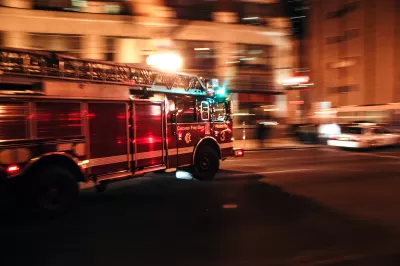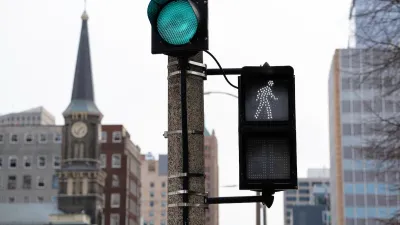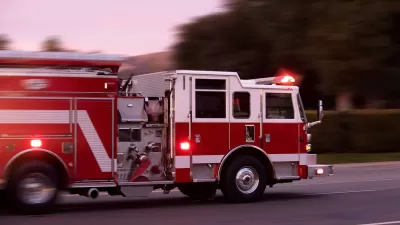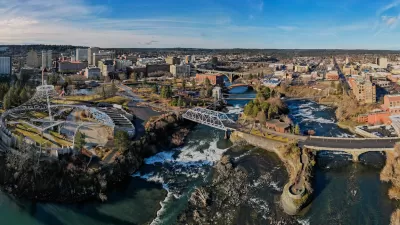Examples from the Netherlands show how bike lanes and traffic calming can coexist with effective emergency response.

An article by Streetsblog USA staff seeks to resolve the conflict between road safety advocates and first responders, who sometimes oppose bike lanes and other safety interventions citing concerns about emergency access.
The article highlights a conversation in Streetsblog’s The Brake podcast that describes “how the Netherlands and other countries have navigated the challenge of building EMS-friendly streets that aren't hostile to people outside cars.”
According to the authors of a new study from the Dutch Cycling Embassy, “one thing that Dutch cities do remarkably well that the US can learn from is the network isolation of their streets and creating this hierarchy of streets so that we do have these arterial roads that the emergency vehicles can use them for the vast majority of their journey. And then maybe the last 200 meters will be on a traffic calmed local street.” The authors say emergency personnel is involved in decisionmaking early to address any potential issues.
The study authors note that many Dutch towns use smaller trucks where appropriate; “in some cities, it was completely fine to start introducing the smaller fire trucks because there are so many water access points along their routes, that's in the end, you don't bring all the water where you where you work with.”
FULL STORY: Do Bike Advocates and EMS Workers Have to Be Enemies?

Planetizen Federal Action Tracker
A weekly monitor of how Trump’s orders and actions are impacting planners and planning in America.

Maui's Vacation Rental Debate Turns Ugly
Verbal attacks, misinformation campaigns and fistfights plague a high-stakes debate to convert thousands of vacation rentals into long-term housing.

San Francisco Suspends Traffic Calming Amidst Record Deaths
Citing “a challenging fiscal landscape,” the city will cease the program on the heels of 42 traffic deaths, including 24 pedestrians.

Amtrak Rolls Out New Orleans to Alabama “Mardi Gras” Train
The new service will operate morning and evening departures between Mobile and New Orleans.

The Subversive Car-Free Guide to Trump's Great American Road Trip
Car-free ways to access Chicagoland’s best tourist attractions.

San Antonio and Austin are Fusing Into one Massive Megaregion
The region spanning the two central Texas cities is growing fast, posing challenges for local infrastructure and water supplies.
Urban Design for Planners 1: Software Tools
This six-course series explores essential urban design concepts using open source software and equips planners with the tools they need to participate fully in the urban design process.
Planning for Universal Design
Learn the tools for implementing Universal Design in planning regulations.
Heyer Gruel & Associates PA
JM Goldson LLC
Custer County Colorado
City of Camden Redevelopment Agency
City of Astoria
Transportation Research & Education Center (TREC) at Portland State University
Jefferson Parish Government
Camden Redevelopment Agency
City of Claremont





























